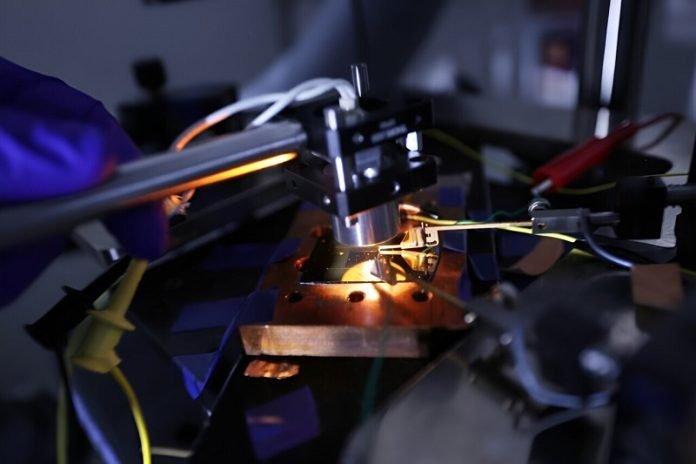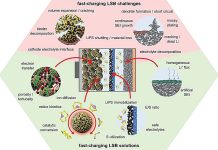
Researchers at the University of Michigan have made a significant breakthrough in converting heat into electricity, achieving an impressive 44% efficiency.
This advancement brings us closer to practical heat batteries, which could store renewable energy and help stabilize the power grid.
Heat batteries can store excess energy generated by solar and wind power during peak production hours and convert it back into electricity when needed.
These devices use thermophotovoltaic cells, similar to solar cells, but instead of converting sunlight, they convert infrared radiation (heat) into electricity.
“As we aim for higher fractions of renewables on the grid to meet decarbonization goals, we need cheaper and longer-lasting energy storage solutions,” said Andrej Lenert, a chemical engineering professor at the University of Michigan.
“The energy generated by solar and wind doesn’t always match when it’s needed.”
The new thermophotovoltaic device developed by the research team can convert heat into electricity at 1,435°C with a power conversion efficiency of 44%, surpassing the previous record of 37%.
This makes it suitable for high-temperature energy storage applications.
Stephen Forrest, a distinguished professor at the University of Michigan and co-author of the study, explained that these heat batteries are passive and don’t require materials like lithium, which are needed for traditional batteries.
Unlike hydroelectric storage, heat batteries can be placed anywhere without needing a nearby water source.
In a heat battery system, thermophotovoltaic cells would surround a block of material heated to at least 1,000°C. This heat could come from electricity generated by solar or wind farms, or from excess heat produced in industrial processes like steel, glass, or concrete production.
“Using electricity to heat something up is simple and cheap compared to lithium-ion batteries,” Lenert said. “It allows us to use a variety of materials for thermal storage.”
The team’s thermophotovoltaic cells capture the most energetic photons emitted by the heated material. To maximize efficiency, they optimized the semiconductor material to capture a broader range of photon energies.
They also added an innovative structure called an air bridge—an air gap with a gold reflector—to trap useful photons and send unused ones back to the heat source for another chance at conversion.
“Unlike solar cells, thermophotovoltaic cells can recycle photons that are not initially useful,” said Bosun Roy-Layinde, a doctoral student and lead author of the study.
Recent studies suggest that stacking two air bridges can further improve the efficiency and temperature range of heat batteries. Forrest believes they can push efficiency beyond 44%, possibly reaching 50% in the near future.
The team has applied for patent protection and is looking for partners to help bring this promising technology to market. This innovation could significantly advance renewable energy storage, making the grid more stable and sustainable.
Source: University of Michigan.



